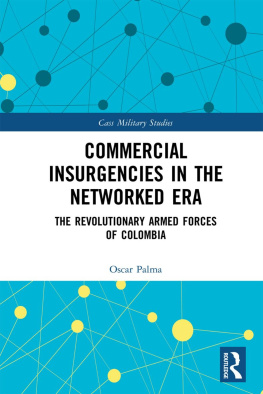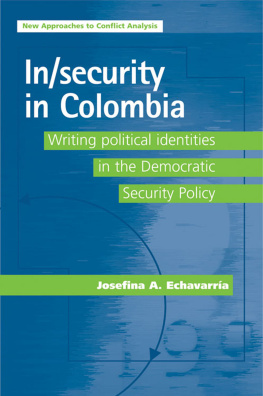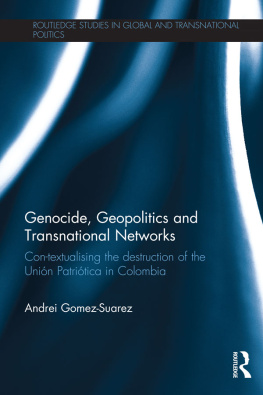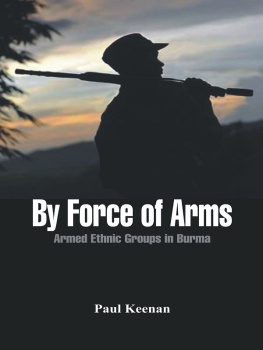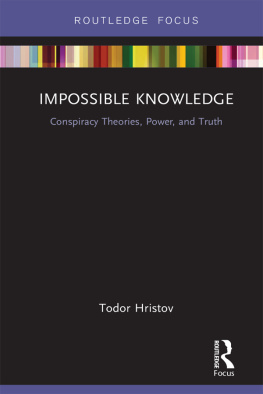
Blood and Capital
This series of publications on Africa, Latin America, Southeast Asia, and Global and Comparative Studies is designed to present significant research, translation, and opinion to area specialists and to a wide community of persons interested in world affairs. The editor seeks manuscripts of quality on any subject and can usually make a decision regarding publication within three months of receipt of the original work. Production methods generally permit a work to appear within one year of acceptance. The editor works closely with authors to produce a high-quality book. The series appears in a paperback format and is distributed worldwide. For more information, contact the executive editor at Ohio University Press, 19 Circle Drive, The Ridges, Athens, Ohio 45701.
Executive editor: Gillian Berchowitz
AREA CONSULTANTS
Africa: Diane M. Ciekawy
Latin America: Brad Jokisch, Patrick Barr-Melej, and Rafael Obregon
Southeast Asia: William H. Frederick
The Ohio University Research in International Studies series is published for the Center for International Studies by Ohio University Press. The views expressed in individual volumes are those of the authors and should not be considered to represent the policies or beliefs of the Center for International Studies, Ohio University Press, or Ohio University.
This title is co-published in conjunction with Between the Lines, a Canadian publisher of books that promote equitable social change and present ideas and analysis not readily found in the mainstream. Specializing in non-fiction books on politics and public policy, social issues, history, international development, native peoples, gender/sexuality, critical race issues, adult and popular education, labour, environment, technology, and media, the press offers solidly researched, well documented, and well designed publications that appeal to general readers, activists, and instructors alike. Between the Lines believes, passionately, that readers should be exposed to challenging and original perspectives on issues of social and cultural importance. For more information on publishing with Between the Lines please visit www.btlbooks.com .
Blood and Capital
The Paramilitarization of Colombia
Jasmin Hristov
2009 by the
Center for International Studies
Ohio University
www.ohioswallow.com
First published in Canada in 2009 by
Between the Lines
720 Bathurst Street, Suite #404
Toronto, Ontario M5S 2R4
Canada
1-800-718-7201
www.btlbooks.com
All rights reserved
To obtain permission to quote, reprint, or otherwise reproduce or distribute material from Ohio University Press publications, please contact our rights and permissions department at (740) 593-1154 or (740) 593-4536 (fax).
In Canada no part of this publication may be reproduced or transmitted in any form without the written permission of Between the Lines, or Access Copyright, www.accesscopyright.ca .
19 18 17 16 15 14 13 12 11 10 09 5 4 3 2 1
Printed in the United States of America
The books in the Ohio University Research in International Studies Series
are printed on acid-free paper

Library of Congress Cataloging-in-Publication Data
Hristov, Jasmin.
Blood and capital : the paramilitarization of Colombia / Jasmin Hristov.
p. cm.(Ohio University research in international studies, Latin America studies series ; No. 48)
Includes bibliographical references and index.
ISBN 978-0-89680-267-4 (pbk. : alk. paper)
1. Paramilitary forcesColombia. 2. TortureColombia. I. Title.
HV6322.3.C7H75 2009
986.106'35dc22
2009002074
Library and Archives Canada Cataloguing in Publication
Hristov, Jasmin, 1978
Blood and capital : the paramilitarization of Colombia / Jasmin Hristov.
Includes bibliographical references and index.
ISBN 978-1-897071-50-2
1. Paramilitary forcesColombia. 2. ColombiaPolitics and government1974. 3. ColombiaEconomic conditions1970. I. Title.
F2279.H74 2009
322.4'209861 | C2008-906360-0 |
Between the Lines gratefully acknowledges assistance for its publishing activities from the Canada Council for the Arts, the Ontario Arts Council, the Government of Ontario through the Ontario Book Publishers Tax Credit program and through the Ontario Book Initiative, and the Government of Canada through the Book Publishing Industry Development Program.
This book is dedicated to all the poor, humiliated, and silenced as well as to all those who believe in the need for a revolutionary transformation of society.
Contents
Illustrations
Figures
Tables
Preface and Acknowledgments
This work examines the creation of the absurd inversions, entailed by the politicoeconomic model currently in place in Colombia, that enable the powerful to claim that war is peace, state violence is democracy, impunity is justice, poverty is a sign of progress, human rights defenders are terrorists, and the victims of crime are the perpetrators. While I closely examine the specifics of violence, I have tried to avoid the trap of analyzing violence for its own sake. Instead, I attempt to offer a model of a twenty-first-century state apparatus of coercion under a formally democratic regime by exploring the structure and functions of that apparatus, the conditions that make it a necessity, and its capacity to evolve into new forms.
A Different Theoretical and Methodological Orientation
Through this book I hope to generate a new way of conceiving Colombias social realityone that exposes and problematizes existing misconceptions about present-day violence. My analysis rests on the idea that academics and educators must participate in the construction of a society where human life, well-being, rights, and dignity are respected. Such a vision calls for a critical, active, humanizing, and accountable social research that transforms material conditions and rejects abstract intellectual contemplation that lacks any commitment to solving real-life problems. The methodological foundation of this approach is influenced by Paulo Freires Pedagogy of the Oppressed. In accordance with one of the pillars of Freires methodology, the major questions I deal with arise from the concrete social reality of the protagonists in the Colombian conflict.
The approach I have chosen is relational; it focuses on the ways certain phenomena intersect and interact. My analysis treats the various forms of violence not as isolated, temporary, or accidental occurrences, but rather as expressions of trends that must be considered in relation to wider political and economic processes. Furthermore, in order to provide a nuanced understanding of the Colombian conflict, I try to actively expose many of the contradictions that have been overlooked by existing studies. In this light, the book contests rigid black-and-white explanations in an attempt to reveal the fluid and blurred nature of violence-generating conditions. Finally, it is my aim to give voice to the peaceable, persistent, and dignified struggles of millions of Colombians silenced through fear and terror as well as to share the stories of those who are or have been implicated in some way in the machinery of repression and impunity. In order to identify structural features without losing sight of the agency of social actors, I link individual testimonies to the large-scale patterns created by many voices, thus revealing how local everyday practices and institutional systems where power is situated mutually sustain each other.


